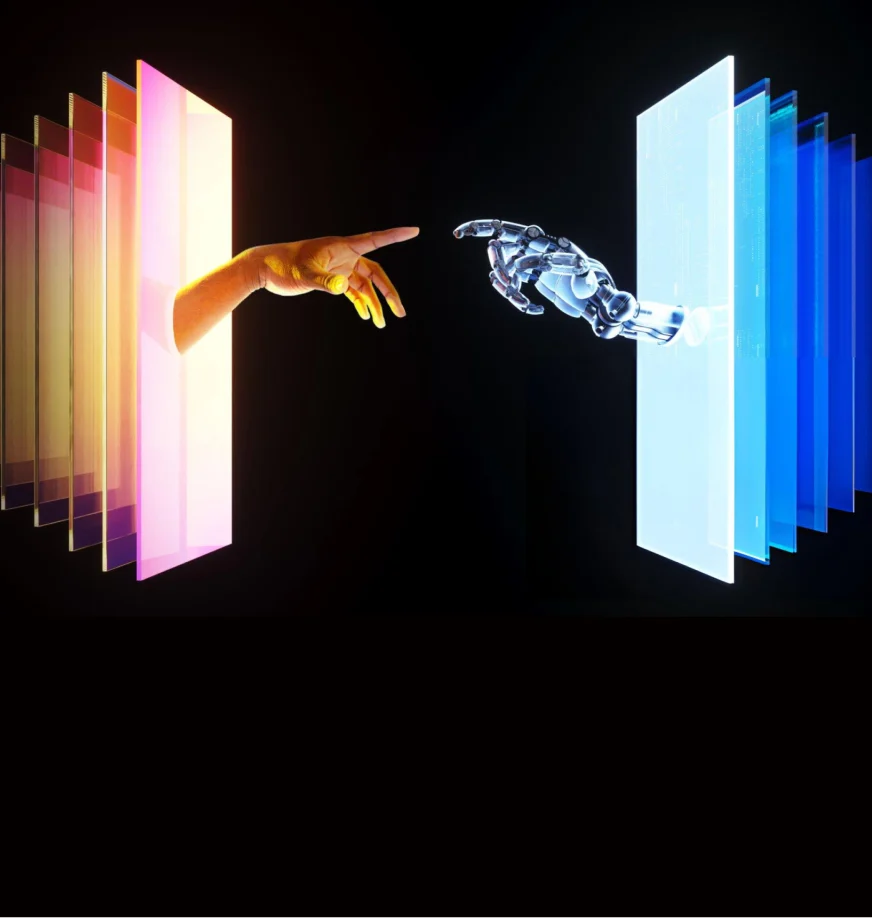The Role of AI in Graphic Design: Will Designers Be Replaced?
Artificial intelligence (AI) has been making waves across various industries, and graphic design is no exception. As AI-powered tools continue to advance, many are wondering how these technologies will impact the future of design. Will AI replace human designers, or will it simply be a tool to enhance creativity and efficiency? In this blog, we’ll explore the role of AI in graphic design and what it means for designers moving forward.
What is AI in Graphic Design?
AI in graphic design refers to the use of artificial intelligence to assist in the creation, automation, and enhancement of design processes. AI-powered tools can perform tasks like generating layouts, selecting color schemes, creating illustrations, and even producing complex graphics with minimal human input. This technology leverages machine learning algorithms to learn from data, improving over time as it adapts to design preferences and trends.
Read more about AI tools in design: AI Tools for Graphic Design - Canva
AI-Assisted Design Tools: How They Work
AI-powered design tools are increasingly popular among designers and creative professionals. These tools assist with tasks like logo design, web design, typography, and more. For example, platforms like Adobe Sensei and Canva use AI to streamline the design process by offering personalized suggestions for fonts, colors, layouts, and even image editing.
One of the most notable examples is DALL·E, an AI tool by OpenAI, which generates realistic images based on text descriptions. It allows designers to quickly create visual assets without having to rely on stock images or extensive photo manipulation.
Learn how AI is transforming design: How Adobe Sensei Revolutionizes Graphic Design
AI in Automation: Streamlining Design Tasks
AI can significantly improve efficiency by automating routine tasks that would normally take hours for designers. For instance, AI can automate resizing images for various platforms, creating social media posts, or generating mockups. Tools like Remove.bg automatically remove backgrounds from images, saving designers time on a task that usually requires precision editing.
While these tools don't replace the need for designers entirely, they allow creative professionals to focus on more strategic, high-level aspects of their work while AI handles the repetitive tasks.
Explore automation tools: Remove.bg - AI Image Background Remover
Enhancing Creativity: AI as a Collaborator
Rather than replacing human creativity, AI is becoming a valuable collaborator in the design process. AI tools can provide inspiration, suggest creative solutions, or even generate design drafts that a designer can refine. For example, AI-driven platforms like Logojoy help designers by creating a variety of logo options based on input such as company name and industry, allowing designers to narrow down choices and then apply their creative expertise to finalize the design.
This collaborative approach can actually enhance creativity by offering new ideas and possibilities that designers may not have initially considered.
Explore Logojoy: Logojoy - AI-Powered Logo Maker
The Fear of Replacement: Will Designers Be Replaced?
As AI continues to evolve, it's natural to wonder if designers will eventually be replaced by machines. However, while AI can automate many aspects of the design process, it’s unlikely that AI will fully replace human designers in the foreseeable future.
Why Designers Won’t Be Replaced:
Human Creativity and Emotion
Design is not just about creating visually appealing graphics; it's about evoking emotions and telling stories. Human designers bring a level of empathy, intuition, and cultural understanding that AI simply cannot replicate. Design is deeply connected to human experience, and designers use their insights into psychology, social trends, and emotions to create meaningful, impactful work.
Strategic Thinking
Designers are often responsible for solving complex problems, crafting visual strategies, and creating brand identities that resonate with specific audiences. These tasks require critical thinking, decision-making, and an understanding of business goals, all of which AI lacks. AI may assist with technical aspects, but the strategic direction still relies on human designers.
Personalization and Client Interaction
Working directly with clients to understand their needs, vision, and preferences is a vital part of the design process. AI tools cannot replicate the personal touch or the ability to foster relationships with clients. Designers bring a human element to the project that ensures the final product aligns with the client's brand and objectives.
AI in Graphic Design: The Future Outlook
While AI may not replace designers, it will certainly reshape the design industry. The future of graphic design lies in the symbiotic relationship between human creativity and AI technology. Designers who embrace AI as a tool for enhancing their work rather than as a threat will be able to leverage its power to improve efficiency, unlock new creative possibilities, and stay ahead of industry trends.
As AI tools become more advanced, designers will need to adapt by learning how to integrate these tools into their workflow. Upskilling in AI-driven design platforms will be essential for designers to remain competitive. The role of the designer will shift towards more conceptual and strategic work, where human ingenuity and creative direction are key.
Read about the future of design: The Future of Graphic Design - AIGA
Conclusion
In conclusion, AI is transforming graphic design by offering innovative tools to streamline the design process and enhance creativity. However, AI is not here to replace human designers. Instead, it serves as a powerful tool that enables designers to focus on higher-level creative and strategic tasks while automating repetitive work. The combination of human expertise and AI’s capabilities is what will shape the future of design, allowing designers to stay relevant and thrive in an ever-changing industry.


.png)



